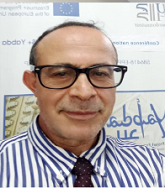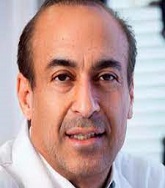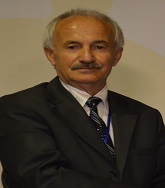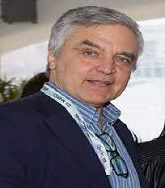Maha Mohammad Khayyat is a research professor of physics of semiconductors at King Abdulaziz City for science and Technology (KACST), Materials Science Research Institute (MSRI), Nanotechnology and Semicondctors Center (NSC) (2015-present). She first started her professional carrier as a staff member of, physics department, Umm Al Qura University (1996-2015), KSA, delivering lectures, supervising MPhil candidates, she also contributed to the development of the university, she also improved her administrative skills via various management positions such as: vice dean of academia, vice dean of scientific research, advisor of the vice rector of Innovation, in addition to her membership at several committees. Dr Khayyat further developed her research skills when she received her PhD from Cavendish laboratory, University of Cambridge (October 2001 - July 2004), studying structural phase transformations of crystalline and amorphous semiconductor materials (Si, Ge, GaAs) using indentation technique at both micro and nanoscale.
Dr Khayyat research passion has continued as she worked as a collaborative researcher at Cavendish lab (2005-2007) where she was introduced to the topic of “energy production†using the available technologies of photovoltaic cells at Microelecronics Research Center (MRC) and Nanoscience Center of University of Cambridge. She then worked within a joint project KACST/ IBM for two years (2008-2010), undertaking research at T. J. Watson Research Center, NY, USA. Dr Khayyat worked on advanced solar cells where she started making original research, based on the strong knowledge on semiconductors she acquired during her earlier work at Cavendish laboratories, by improving the nanowire technology and spalling at liquid nitrogen temperature for the purpose of fabricating thin and flexible solar cells. After that, she spent her sabbatical year at MIT (2013), Nanoengineering group, funded by the Center of Clean Water and Energy of KFUPM. The objective was to develop surface structures that trap photons in thin films of silicon. She has been working closely with KAUST on the mechanical properties of GaN nanomembranes within the KACST-KAUST-UCSB Solid-State Lighting Institute, where she did the mechanical measurements at Poitiers University, France (2016).
Since 2017 Dr Khayyat is looking for approaches to improve yield and cell efficiency and lower manufacturing costs overall, such as using PC AND/OR PMMA materials in designing PV cells using Nanoscale Chemical Templating (NCT) technique, that she invented earlier, or via modules encapsulation. During 2018-2020 she joined KACST-Cambridge (engineering dept) Excellence Center working on “High Performance Infiltration Grown Bulk Superconductors for Applicationsâ€. Most importantly, she has been acting recently as a project manager of Thermal Energy Storage (TES), at the National Energy Storage center of the Energy Institute of KACST working in implementing and launching of Thermal Storage Laboratory located at KACST Solar Villagefocusing on increasing heat transfer rate of the phase change materials PCM by inclusion of nanostructures, and in improving the design of the TES unit using CPV technology, as an innovative solution. Moreover, she is working closely at several projects at the Energy Institute, such as water desalination and defloridation. Dr Khayyat was a member at the Scientific Committee and other committees at KACST, she is a representative of the scientific committee at MSRI.
Currently, she is very much involved in the Global Research Council (GRC), Gender Working Group (GWG) where the main goals of the GWG are the participation and promotion of women in the research workforce, and the integration of the gender dimension in research design and in the analysis of research outcomes. She is very much involved with the recently released booklet and report of GWG of best practices of encouraging specialized women in research and the progress achieved internationaly by research funding organizations. Dr. Khayyat is aiming to proceed further with her accumulative expertise, and more particularly at research related to electrical energy production for well stated and planned goals for the benefit of science at her beloved country and extend it to anywhere else, as “good science anywhere is good everywhereâ€.








